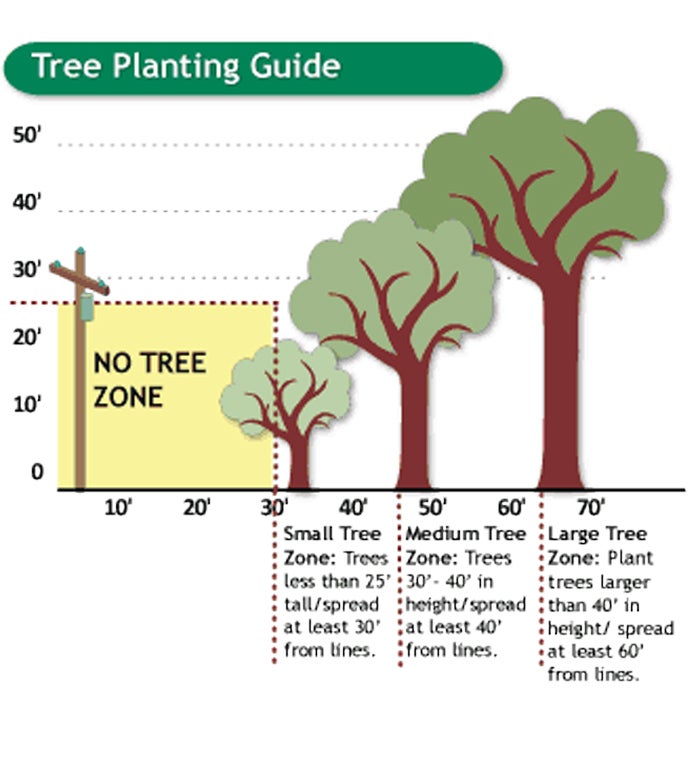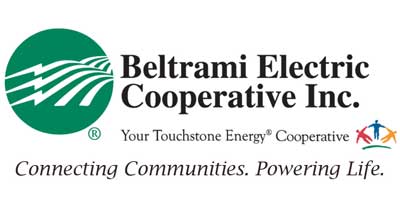VEGETATION MANAGEMENT PROGRAM- Right-of-way
Beltrami Electric Cooperative uses a comprehensive vegetation management program to maintain the right of way for the more than 3,496 miles of overhead and underground power lines that are operated and maintained by the cooperative. We are dedicated to providing our members with safe and reliable electric service. Trees and brush can be conductors of electricity, and trimming is necessary to avoid outages and safety hazards for our crews and the general public.
RELIABLE AND SAFE POWER FOR MEMBERS
Beltrami Electric Cooperative strives to maintain and improve the safety and reliability of your electric service. To accomplish this, Beltrami Electric maintains a three-step right-of-way corridor maintenance cycle. Proper vegetation management consists of removing trees, mowing underbrush, controlling vegetation growth, trimming limbs that extend into the right-of-way and cutting what is classified as danger trees. A danger tree is a tree that, if it fell, would hit the main power line.
TREES AND POWER LINES DON'T MIX
Larger trees that are planted in utility right-of-ways create a dangerous safety hazard by providing children an opportunity to play near power lines. When a tree limb comes in contact with a power line, there is a definite possibility of shock injury or fatal electrocution to a child or adult touching or climbing the tree.
Trees located in a utility right-of-way increase the chance of an outage (or blinking lights). They will also increase the time it takes to restore power after any major storm that may have damaged power lines and poles from higher winds or lightning.
Right-of-Way Maintenance FAQs
A right-of-way (ROW) corridor for an electric line is a strip of land that an electric utility uses to construct, maintain, repair or replace an overhead or underground power line. The corridor allows the utility to provide clearance from trees, buildings and other structures that could interfere with line installation, maintenance and operation. Beltrami Electric Cooperative requires a 30-foot clearance on each side of the poles and 15-foot minimum on each side of the poles when approaching a residence.
In most cases, yes. Our experienced forestry crew can visit with you about any concerns members may have. Call the cooperative at 218-444-2540 or 800-955-6083.
We can't prevent bad weather, but we can reduce outages caused by falling limbs and trees. Our forestry team works year-round to maintain the right-of-way. How much they trim depends on the tree. If it's fast growing, the crew will trim branches more than they would for slow-growing trees.
Additionally, Beltrami Electric Cooperative contracts with qualified, independent contractors to apply a spot-treatment of an EPA-approved biodegradable herbicide where there are unwanted trees, brush and noxious weeds. This includes poison ivy around the utility poles and trees and brush that will eventually interfere with electrical service, reliability or accessibility, (This does not include areas near gardens or mowed areas)
Please understand that you own the byproducts. Upon your request, the cooperative is willing to assist in clean-up and wood chipping but cannot cost-effectively haul away the remains. All byproducts will be left on your property unless you contact Beltrami Electric Cooperative to make clean-up arrangements.
Contact Beltrami Electric Cooperative at (218) 444-2540 or (800) 955-6083
The cooperative believes trees are an important part of our environment and community. To avoid dangerous situations and threats to its system, Beltrami Electric supports the philosophy of "the right tree in the right place."
As you landscape your property, remember to "look up," and use the guide to the right for planting near overhead power lines.
For underground lines on your property, maintain a clearance of 10-feet on either side of the line. This provides room for utility maintenance equipment to access and repair lines when necessary.
Beltrami Electric Cooperative publishes the upcoming year's ROW clearing areas in the September issue of Northern Lights. In addition, members will receive a postcard in the mail and an automated phone notification the to contact number on their account. For property owners without an active service on the property, they will receive a postcard mailed to their last known mailing address.
Members may contact our office if you have any questions or would like clarification on our right-of-way clearing process at (218) 444-2540 or (800) 955-6083. Our forestry team can meet with you at your location to discuss potential options.
If you have a tree on your property that could cause a power outage, contact Beltrami Electric Cooperative. We recommend marking the tree with a flag or paint. Our forestry crew will visit your property for an evaluation.
Three-Step Right-of-Way Corridor Maintenance Cycle
STEP 1: Trees and brush are removed from the corridor.
STEP 2: Selective spot treatment of an EPA-approved biodegradable herbicide where there are unwanted trees, brush and noxious weeds. This includes poison ivy around the utility poles and trees and brush that will eventually interfere with electrical service, reliability or accessibility. This does not include areas near gardens or mowed areas.
STEP 3: A review of any areas that may have been missed in prior herbicide treatments will follow 1-2 years after step two. Subsequent maintenance cycles follow in 8-10 year increments, which will be less intensive due to the decreased amount of trees and brush.
What Can I Plant and Where?

